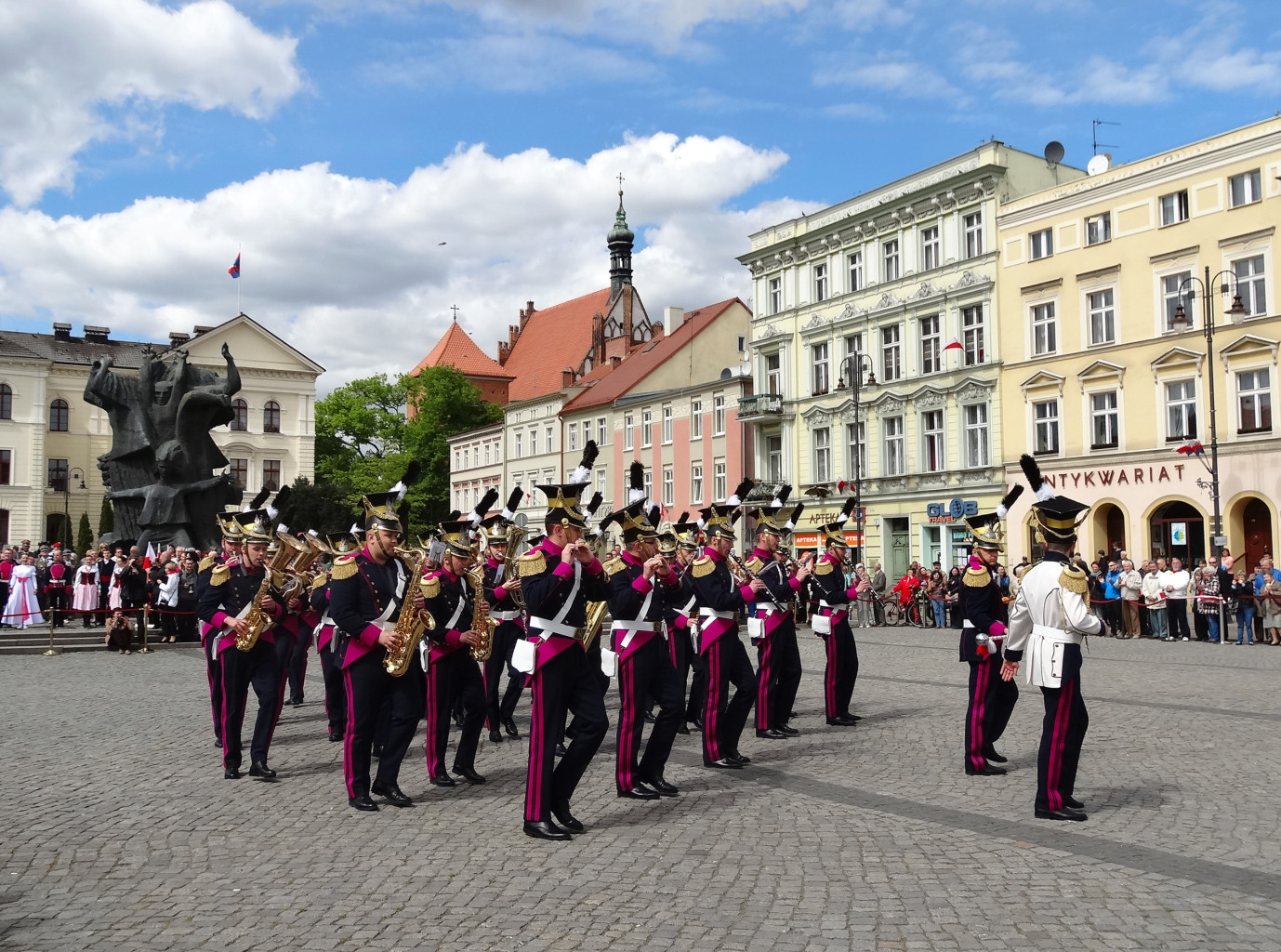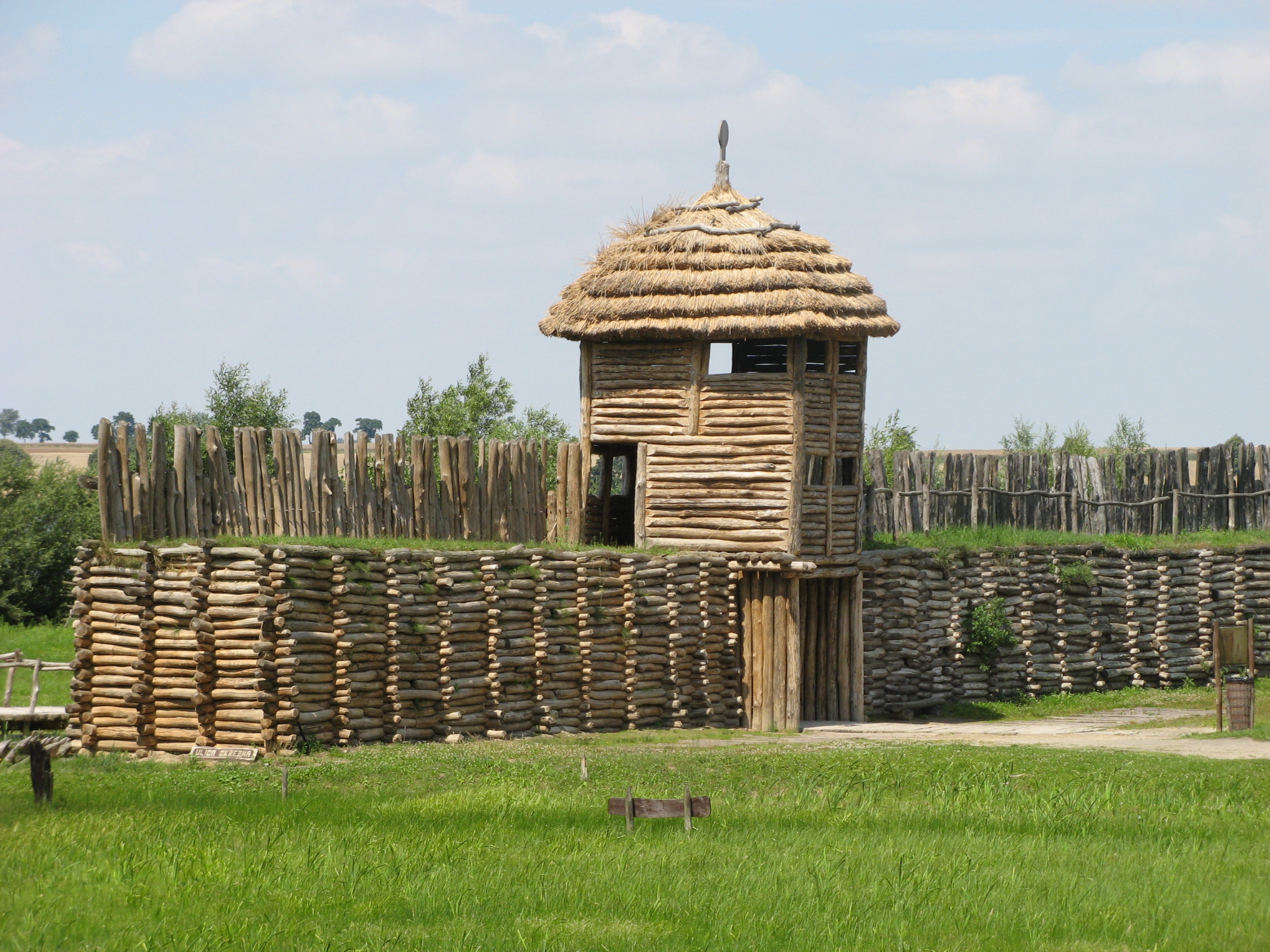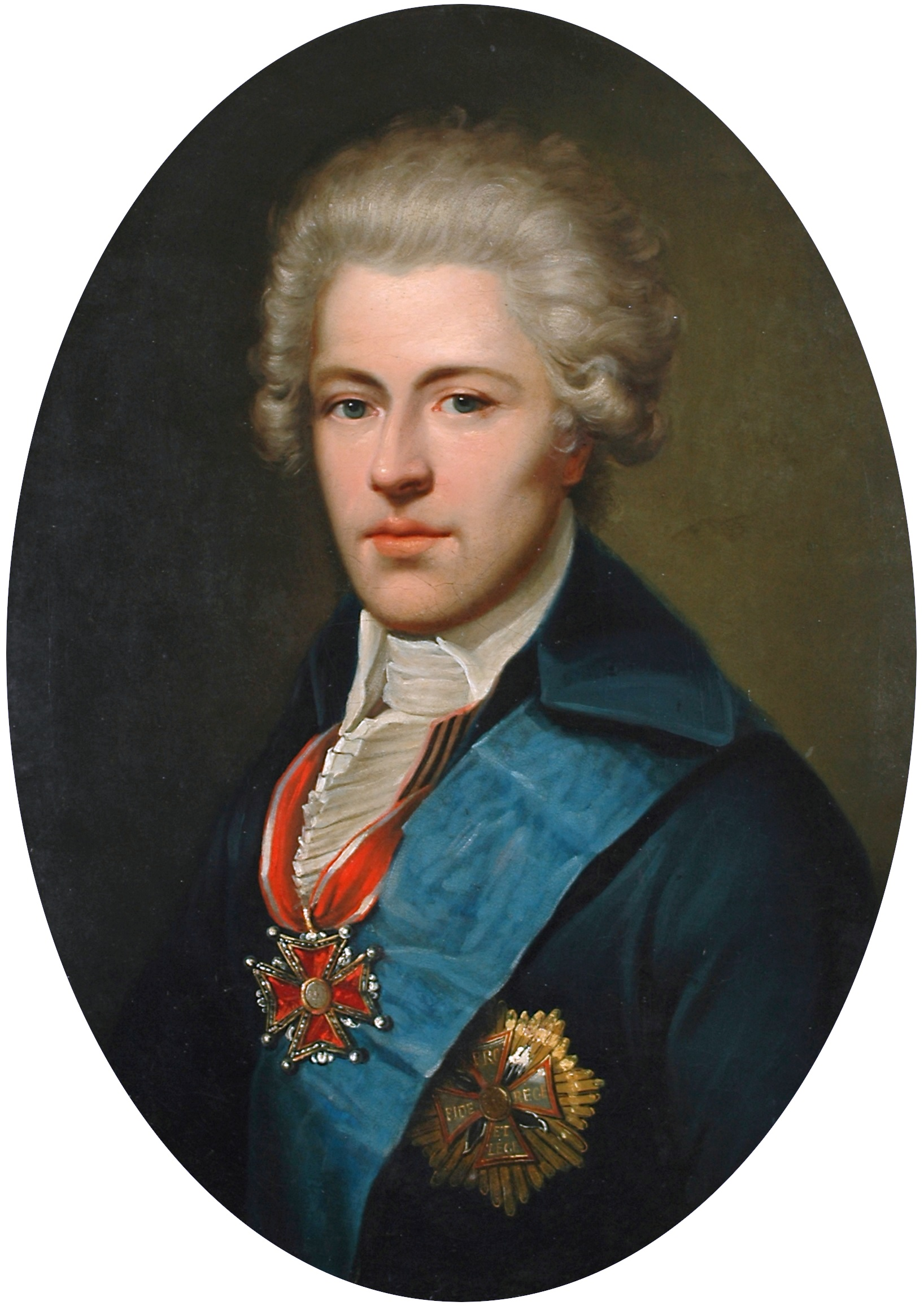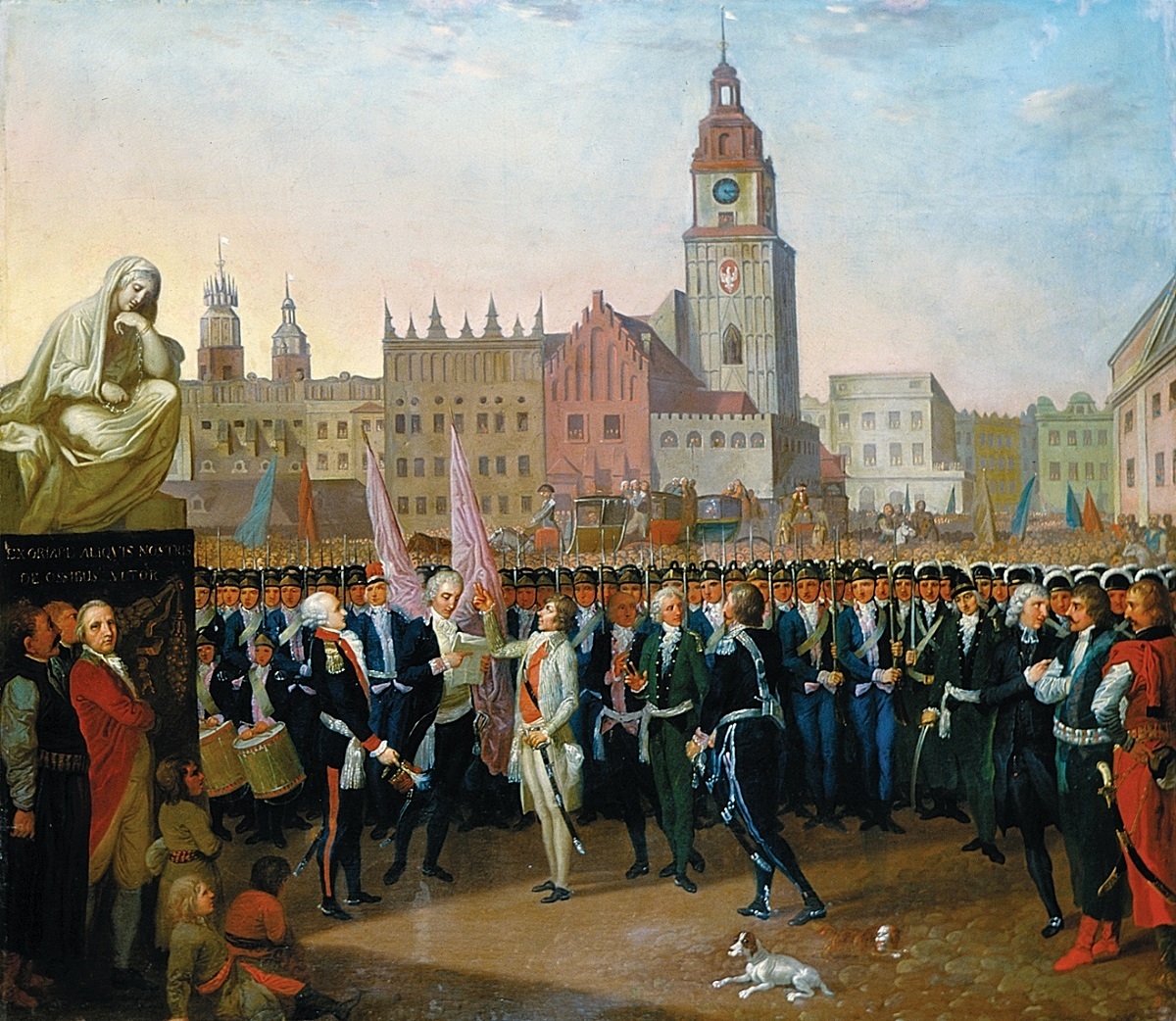|
3 May Constitution Day
3 May Constitution Day (also ''3rd May National Holiday''; pl, Święto Konstytucji 3 Maja) is a Polish national and public holiday that takes place on 3 May. The holiday celebrates the declaration of the Constitution of 3 May 1791. Festivities date back to the Duchy of Warsaw early in the 19th century, but it became an official holiday only in 1919 in the Second Polish Republic. Delisted during the times of the Polish People's Republic, it was reestablished after the fall of communism in modern Poland. Background The Constitution of 3 May 1791 is considered one of the most important achievements in the history of Poland, despite being in effect for only a year, until the Russo-Polish War of 1792. Historian Norman Davies calls it "the first constitution of its type in Europe"; other scholars also refer to it as the world's second oldest constitution. The 3 May Constitution was designed to redress long-standing political defects of the Polish–Lithuanian Commonwealth. The Co ... [...More Info...] [...Related Items...] OR: [Wikipedia] [Google] [Baidu] |
Constitution Of May 3, 1791 (painting)
''The Constitution of 3 May 1791'' ( pl, Konstytucja 3 Maja 1791 roku) is an 1891 Romantic oil painting on canvas by the Polish artist Jan Matejko. It is a large piece, and one of Matejko's best known. It memorializes the Polish Constitution of 3 May 1791, a milestone in the history of the Polish–Lithuanian Commonwealth and a high point of the Polish Enlightenment. Like many Matejko works, the picture presents a grand scene populated with numerous historic figures, including Poland's last King, Stanisław August Poniatowski; Marshals of the Great Sejm Stanisław Małachowski and Kazimierz Nestor Sapieha; co-authors of the Constitution such as Hugo Kołłątaj and Ignacy Potocki; and other major contemporary figures such as Tadeusz Kościuszko. Some twenty individuals have been identified by modern historians; another ten or so who had been reported in older sources as being present, await definitive identification. The picture was painted between January and October 1891 to ... [...More Info...] [...Related Items...] OR: [Wikipedia] [Google] [Baidu] |
Constitution
A constitution is the aggregate of fundamental principles or established precedents that constitute the legal basis of a polity, organisation or other type of Legal entity, entity and commonly determine how that entity is to be governed. When these principles are written down into a single document or set of legal documents, those documents may be said to embody a ''written constitution''; if they are encompassed in a single comprehensive document, it is said to embody a ''codified constitution''. The Constitution of the United Kingdom is a notable example of an ''uncodified constitution''; it is instead written in numerous fundamental Acts of a legislature, court cases or treaties. Constitutions concern different levels of organizations, from Sovereign state, sovereign countries to Company, companies and unincorporated Club (organization), associations. A treaty which establishes an international organization is also its constitution, in that it would define how that organiza ... [...More Info...] [...Related Items...] OR: [Wikipedia] [Google] [Baidu] |
Polish Culture
The culture of Poland ( pl, Kultura Polski ) is the product of its geography and distinct historical evolution, which is closely connected to an intricate thousand-year history. Polish culture forms an important part of western civilization and the western world, with significant contributions to art, music, philosophy, mathematics, science, politics and literature. Its unique character developed as a result of its geography at the confluence of various European regions. It is theorised and speculated that ethnic Poles and the other Lechites (Kashubians and Silesians) are the combination of descendants of West Slavs The West Slavs are Slavic peoples who speak the West Slavic languages. They separated from the common Slavic group around the 7th century, and established independent polities in Central Europe by the 8th to 9th centuries. The West Slavic lan ... and people indigenous to the region including Celts, Balts and Germanic tribes which were gradually Polonization, Po ... [...More Info...] [...Related Items...] OR: [Wikipedia] [Google] [Baidu] |
Polish History
The history of Poland spans over a thousand years, from medieval tribes, Christianization and monarchy; through Poland's Golden Age, expansionism and becoming one of the largest European powers; to its collapse and partitions, two world wars, communism, and the restoration of democracy. The roots of Polish history can be traced to ancient times, when the territory of present-day Poland was settled by various tribes including Celts, Scythians, Germanic clans, Sarmatians, Slavs and Balts. However, it was the West Slavic Lechites, the closest ancestors of ethnic Poles, who established permanent settlements in the Polish lands during the Early Middle Ages.. The Lechitic Western Polans, a tribe whose name means "people living in open fields", dominated the region and gave Poland - which lies in the North-Central European Plain - its name. The first ruling dynasty, the Piasts, emerged in the 10th century AD. Duke Mieszko I is considered the ''de facto'' creator of the Polish sta ... [...More Info...] [...Related Items...] OR: [Wikipedia] [Google] [Baidu] |
National Symbol
A national symbol is a symbol of any entity considering and manifesting itself to the world as a national community: the sovereign states but also nations and countries in a state of colonial or other dependence, federal integration, or even an ethnocultural community considered a 'nationality' despite having no political autonomy. National symbols intend to unite people by creating visual, verbal, or iconic representations of the national people, values, goals, or history. These symbols are often rallied around as part of celebrations of patriotism or aspiring nationalism (such as independence, autonomy or separation movements) and are designed to be inclusive and representative of all the people of the national community. Common official national symbols *The flag or banner of a nation-state *The coat of arms of the land or ruling dynasty *The seal or stamp of the land or ruling dynasty *The head of state, especially in a monarchy *The associated device and motto can a ... [...More Info...] [...Related Items...] OR: [Wikipedia] [Google] [Baidu] |
List Of Political Scientists
This is a list of notable political scientists. See the list of political theorists for those who study political theory. See also political science. A * Robert Abelson - Yale University psychologist and political scientist with special interests in statistics and logic * Henry J. Abraham - American scholar on the judiciary and constitutional law and James Hart Professor of Government Emeritus at the University of Virginia * Alan Abramowitz – expert in American politics, political parties, ideological realignment, elections, and voting behavior; professor at Emory University * Paul R. Abramson - American political scientist known for his research and writing on American, European, and Israeli elections and professor of political science at Michigan State University * As'ad AbuKhalil - Lebanese-American professor of political science at California State University, Stanislaus. *Ibrahim Abu-Lughod * Brooke Ackerly - expert on grounded normative theory, feminist theory, fem ... [...More Info...] [...Related Items...] OR: [Wikipedia] [Google] [Baidu] |
Hugo Kołłątaj
Hugo Stumberg Kołłątaj, also spelled ''Kołłątay'' (pronounced , 1 April 1750 – 28 February 1812), was a prominent Polish constitutional reformer and educationalist, and one of the most prominent figures of the Polish Enlightenment. He served as Deputy Chancellor of the Crown, 1791–92. He was a Roman Catholic priest, social and political activist, political thinker, historian, philosopher, and polymath. Biography Early life Hugo Kołłątaj was born 1 April 1750 in Dederkały Wielkie (now in Western Ukraine) in Volhynia into a family of Polish nobility. Soon after, his family moved to Nieciesławice, near Sandomierz, where he spent his childhood. He attended school in Pińczów. He began his studies at the Kraków Academy, subsequently, Jagiellonian University, where he studied law and gained a doctorate. Afterwards, around 1775 he took holy orders. He studied in Vienna and Italy (Naples and Rome , established_title = Founded , established_date = 753 BC ... [...More Info...] [...Related Items...] OR: [Wikipedia] [Google] [Baidu] |
Ignacy Potocki
Count Roman Ignacy Potocki, generally known as Ignacy Potocki (; 1750–1809), was a Polish nobleman, member of the influential magnate Potocki family, owner of Klementowice and Olesin (near Kurów), a politician, writer, and office holder. He was the Marshal of the Permanent Council (Rada Nieustająca) in 1778–1782, Grand Clerk of Lithuania from 1773, Court Marshal of Lithuania from 1783, Grand Marshal of Lithuania from 16 April 1791 to 1794. He was an educational activist, member of the Commission of National Education and the initiator and president of Society for Elementary Textbooks. He was an opponent of king Stanisław II August in the 1770s and 1780s, and a major figure in the Polish politics of that era. During the Great Sejm he was a leader of the Patriotic Party and the reform movement and eventually backed the King in many reform projects. An advocate of a pro-Prussian orientation, he helped conclude an alliance with Prussia in 1790. He co-authored the Constitut ... [...More Info...] [...Related Items...] OR: [Wikipedia] [Google] [Baidu] |
Third Partition Of Poland
The Third Partition of Poland (1795) was the last in a series of the Partitions of Poland–Lithuania and the land of the Polish–Lithuanian Commonwealth among Prussia, the Habsburg monarchy, and the Russian Empire which effectively ended Polish–Lithuanian national sovereignty until 1918. The partition was the result of the Kościuszko Uprising and was followed by a number of Polish uprisings during the period. Background Following the First Partition of Poland in 1772, in an attempt to strengthen the significantly weakened Commonwealth, King Stanisław August Poniatowski put into effect a series of reforms to enhance Poland's military, political system, economy, and society. These reforms reached their climax with the enactment of the May Constitution in 1791, which established a constitutional monarchy with separation into three branches of government, strengthened the bourgeoisie and abolished many of the nobility's privileges as well as many of the old laws of serfdom. I ... [...More Info...] [...Related Items...] OR: [Wikipedia] [Google] [Baidu] |
Kościuszko Uprising
The Kościuszko Uprising, also known as the Polish Uprising of 1794 and the Second Polish War, was an uprising against the Russian Empire and the Kingdom of Prussia led by Tadeusz Kościuszko in the Polish–Lithuanian Commonwealth and the Prussian partition in 1794. It was a failed attempt to liberate the Polish–Lithuanian Commonwealth from external influence after the Second Partition of Poland (1793) and the creation of the Targowica Confederation. Background Decline of the Commonwealth By the early 18th century, the magnates of Poland and Lithuania controlled the state – or rather, they managed to ensure that no reforms would be carried out that might weaken their privileged status (the "Golden Freedoms"). Through the abuse of the '' liberum veto'' rule which enabled any deputy to paralyze the Sejm (Commonwealth's parliament) proceedings, deputies bribed by magnates or foreign powers or those simply content to believe they were living in an unprecedented "Go ... [...More Info...] [...Related Items...] OR: [Wikipedia] [Google] [Baidu] |
Second Partition Of Poland
The 1793 Second Partition of Poland was the second of three partitions (or partial annexations) that ended the existence of the Polish–Lithuanian Commonwealth by 1795. The second partition occurred in the aftermath of the Polish–Russian War of 1792 and the Targowica Confederation of 1792, and was approved by its territorial beneficiaries, the Russian Empire and the Kingdom of Prussia. The division was ratified by the coerced Polish parliament (Sejm) in 1793 (see the Grodno Sejm) in a short-lived attempt to prevent the inevitable complete annexation of Poland, the Third Partition. Background By 1790, on the political front, the Commonwealth had deteriorated into such a helpless condition that it was forced into an alliance with its enemy, Prussia. The Polish-Prussian Pact of 1790 was signed, giving false hope that the Commonwealth might have at last found an ally that would shield it while it reformed itself. The May Constitution of 1791 enfranchised the bourgeoisie, estab ... [...More Info...] [...Related Items...] OR: [Wikipedia] [Google] [Baidu] |
Constitutional Monarchy
A constitutional monarchy, parliamentary monarchy, or democratic monarchy is a form of monarchy in which the monarch exercises their authority in accordance with a constitution and is not alone in decision making. Constitutional monarchies differ from absolute monarchies (in which a monarch is the only decision-maker) in that they are bound to exercise powers and authorities within limits prescribed by an established legal framework. Constitutional monarchies range from countries such as Liechtenstein, Monaco, Morocco, Jordan, Kuwait, and Bahrain, where the constitution grants substantial discretionary powers to the sovereign, to countries such as Australia, the United Kingdom, Canada, the Netherlands, Spain, Belgium, Sweden, Malaysia, Thailand, Cambodia, and Japan, where the monarch retains significantly less personal discretion in the exercise of their authority. ''Constitutional monarchy'' may refer to a system in which the monarch acts as a non-party political head of ... [...More Info...] [...Related Items...] OR: [Wikipedia] [Google] [Baidu] |









